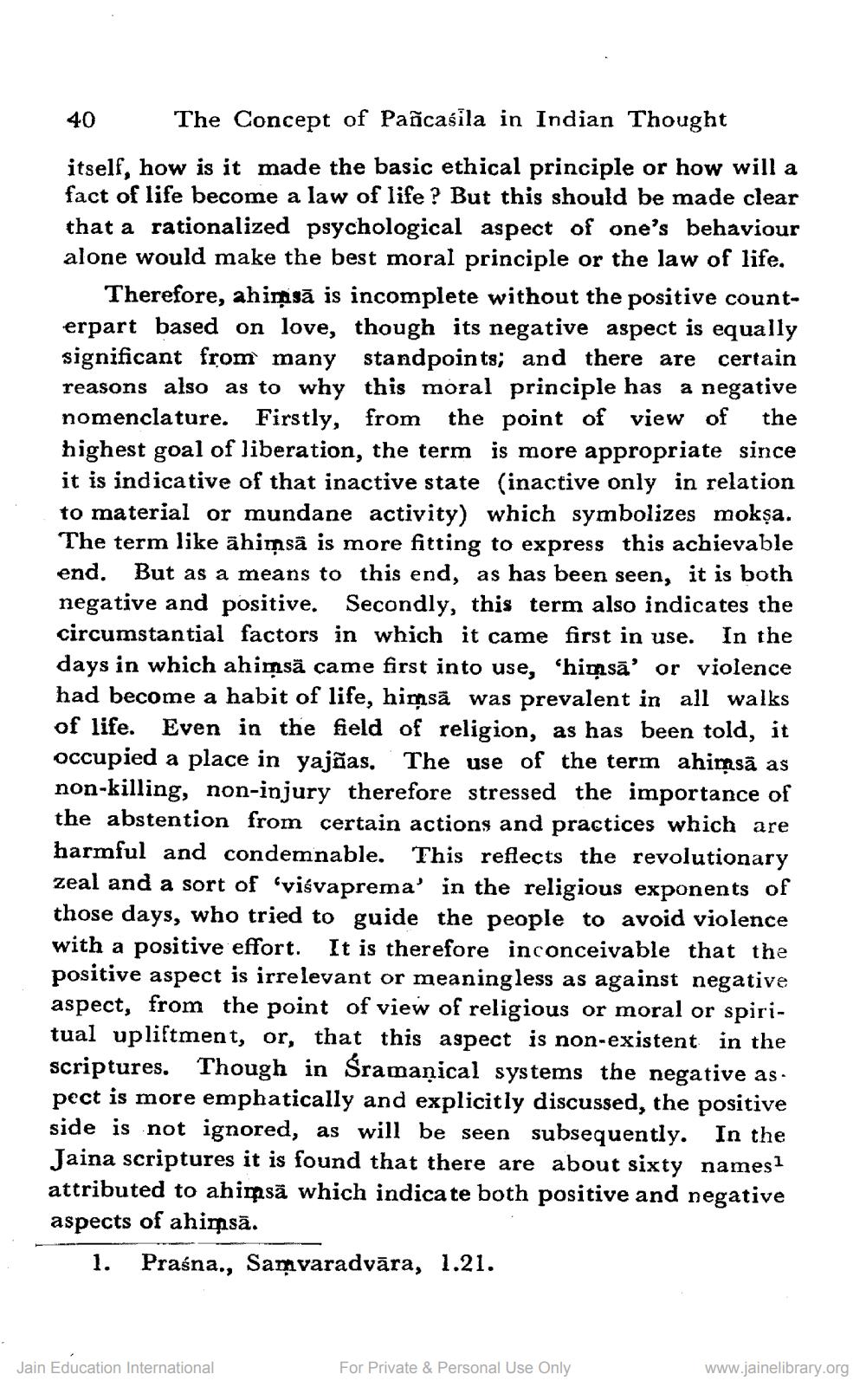________________
40 The Concept of Pancasila in Indian Thought itself, how is it made the basic ethical principle or how will a fact of life become a law of life? But this should be made clear that a rationalized psychological aspect of one's behaviour alone would make the best moral principle or the law of life.
Therefore, ahimsā is incomplete without the positive counterpart based on love, though its negative aspect is equally significant from many standpoints; and there are certain reasons also as to why this moral principle has a negative nomenclature. Firstly, from the point of view of the highest goal of liberation, the term is more appropriate since it is indicative of that inactive state (inactive only in relation to material or mundane activity) which symbolizes mokşa. The term like āhimsā is more fitting to express this achievable end. But as a means to this end, as has been seen, it is both negative and positive. Secondly, this term also indicates the circumstantial factors in which it came first in use. In the days in which ahimsä сame first into use, 'hiņsā' or violence had become a habit of life, himsã was prevalent in all walks of life. Even in the field of religion, as has been told, it occupied a place in yajñas. The use of the term ahimsã as non-killing, non-injury therefore stressed the importance of the abstention from certain actions and practices which are harmful and condemnable. This reflects the revolutionary zeal and a sort of 'viśvaprema' in the religious exponents of those days, who tried to guide the people to avoid violence with a positive effort. It is therefore inconceivable that the positive aspect is irrelevant or meaningless as against negative aspect, from the point of view of religious or moral or spiritual upliftment, or, that this aspect is non-existent in the scriptures. Though in Šramaņical systems the negative as. pect is more emphatically and explicitly discussed, the positive side is not ignored, as will be seen subsequently. In the Jaina scriptures it is found that there are about sixty names attributed to ahimsä which indicate both positive and negative aspects of ahimsā.
1. Praśna., Samvaradvāra, 1.21.
Jain Education International
For Private & Personal Use Only
www.jainelibrary.org




